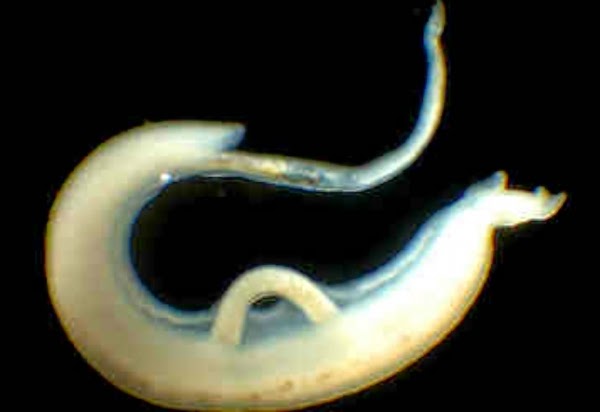This Mysterious Living Creature Found in 6200-Year-Old Tomb Links Technology To Spread Of Disease

A parasitic egg was discovered by archeologists in Northern Syria, near the pelvis of a child’s skeleton. They say the skeleton dates back to when the ancient societies started growing crops using irrigation systems. Farming with irrigation means farmers spent most of their time on the farms, wading in warm water. These are ideal conditions for these parasites to get into the human body. They may also have triggered outbreaks of schistosomiasis, a water-borne flatworm disease.
A Near Eastern Archeology professor at University of Chicago, Gil Stein in an email said that, “the invention of irrigation was a major technological breakthrough (but) it had unintended consequences. A more reliable food supply came at the cost of more disease.”
As people wade through the warm fresh water, the flatworm parasite enters their skin: snails carry the worms and they easily burrow into a human’s skin. When they grow into adult form, the worms live in the kidneys, bladder, intestines and any other place in the body for many years. Symptoms caused by these parasites include rashes, fever, vomiting, abdominal pain, and leg paralysis. The disease can, however, be treated easily today using drugs that kill the worms.

Evidence of barley and wheat farming was found in the town where the skeletons were found, according to Stein. Irrigation of these crops could have spurred other diseases like malaria, due to the pools of stagnant water that are good mosquito breeding grounds.
Another study author, Piers Mitchell, said that the global transmission of these flatworm parasites could have been inadvertently launched by ancient farming societies. These worms now cause sicknesses to many people every year. In developing countries, modern methods of farming are still helping spread diseases. “In many parts of Africa, someone clever decides to put in a dam or an artificial water source and then 10 years later, everyone’s getting schistosomiasis,” she said.
This research is available in the journal of Lancet Infectious Diseases online.
Other experts agree that irrigation could have been what helped spread the parasitic diseases from the beginning, in ancient times. Quentin Bickle, was one of them. He is a parasite expert at the London School of Hygiene and Tropical Medicine. “Egypt along the Nile was a hotspot for generations because people were crammed into the flood plain and there were probably a lot of people who had low-level (flatworm) infections for their entire lives. People would have known there was something weird going on but they wouldn’t have known what to do”
[Source: www.news.nationalpost.com ]
























